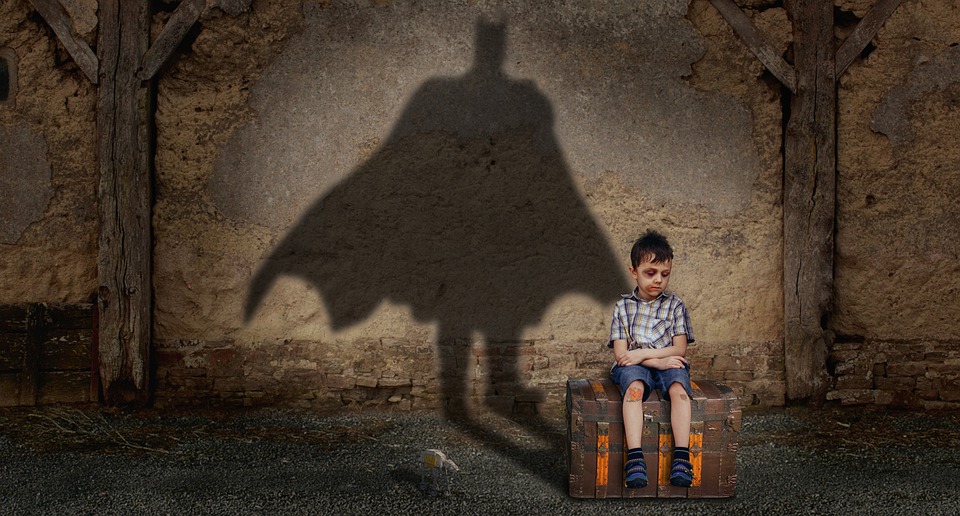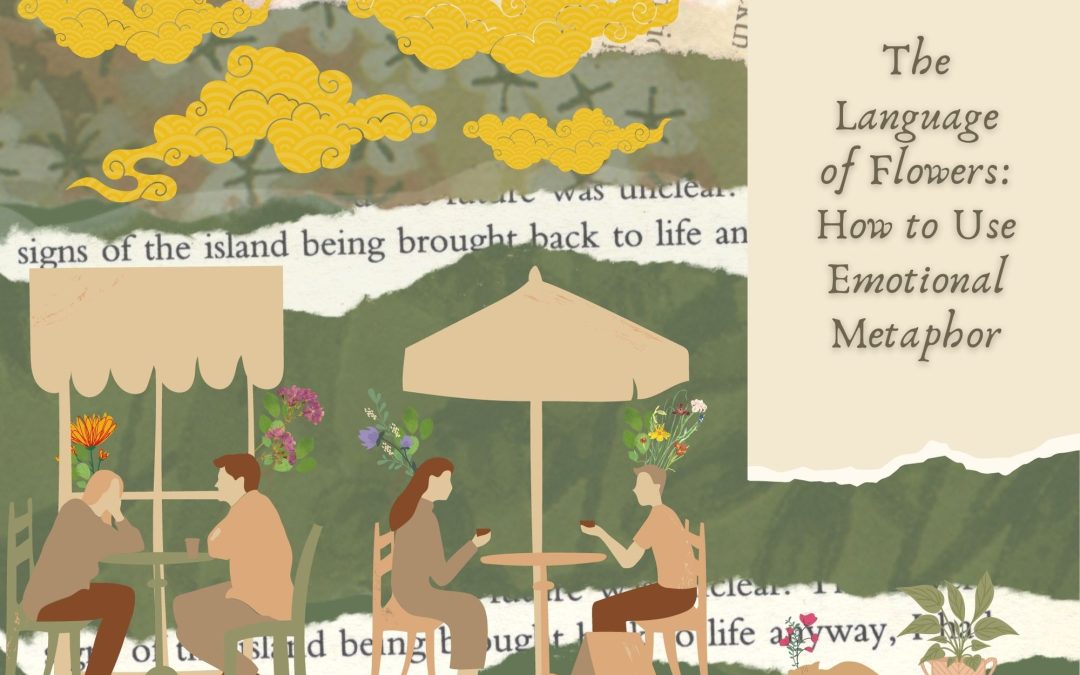
Short Stories: The Bane of the Novelist
If you’re a long-form writer like myself, you know the struggle of reigning in your desire to provide every detail of your character’s life, or else risk your work becoming a massive info dump. You may also suspect that trying to start your career as a novelist with no published work to show off isn’t going to be easy. However, when you go searching for opportunities to get your name out there, you quickly realize that everything you’re finding are journals that only accept—you guessed it—the dreaded short story.
The real question for a novelist isn’t where to submit these stories but rather how to write them in the first place. I have gone out in search of some answers and here is a culmination of advice to keep in mind if you’re struggling.
1. Acceptance
If you start a short story thinking it won’t be as good as your other writing, it won’t be. You must accept that the reader isn’t going to know every little thing about your main character.
For example, a character in a novel—let’s call her Amy—might spend some time complaining about a horrible coffee date she went on in order to show the reader part of her personality and viewpoint. The short story version of this would sum it up with, “Amy knew that her disdain stemmed from one too many dates gone wrong.”
2. Let the Form Serve You
NY Book Editors suggests “[letting] your short story serve as a character snapshot.” This is a helpful way to view the form if you’re having trouble sticking to one idea or moment.
Try walking through a scene with a character in your novel. Curious how your MC would react to a visit from a long lost uncle? Write a short story about it. Wondering how to hone in on the heartbreak of losing a pet? Write a short story about it. These snapshots work double time by both padding your portfolio and allowing you to explore your character.
3. Get to the Point
The most important thing to remember when writing a short story: stay in the action. You may be tempted in the middle of a tense scene to slow down with a moment of reflection but you have to fight that urge. Keep the character focused, maintain momentum with strong dialogue, and utilize the setting as a tool rather than simply a background.
For example, if there’s a park that has sentimental value for your character, don’t have them tell us about it from their bedroom. Set the scene there and see how the emotions naturally shape the narrative.
Center your short story around this question: What is the one thing that is most important to my character? Now showcase that in one instance. It’s intimidating, but once you identify that core desire and key moment, your plot will stay much more focused.
4. Be Precise and Concise
A skill that all writers must learn is how to create complexity and depth in just a few lines. To help achieve this daunting task, Writer’s Edit suggests “employ[ing] clever dialogue, interactions and reactions, flashbacks, and short sharp imagery to develop [your] characters.”
Find something truly unique about your main character and run with it, always making sure to be picky with your word choice. Instead of telling the reader “Samantha was always a smart student,” try working it into her inner dialogue, something like, “Sure, some people might call Samantha ‘intelligent’ because she has a 4.0, but she didn’t want to be reduced to a number.”
I know from experience that it can be difficult to break free from the comfort of your preferred writing style, but if you allow yourself room to play and make mistakes, I have faith that you will be able to reap the many benefits that exist in the world of short stories.
Meet the blogger:
 ANGEL KIDD is a senior creative writing major with a focus in fiction. When she isn’t watching YouTube, she is attempting to write a science fiction novel. After graduation she hopes to find a career in the publishing industry or as a manuscript editor before hopefully becoming a published author.
ANGEL KIDD is a senior creative writing major with a focus in fiction. When she isn’t watching YouTube, she is attempting to write a science fiction novel. After graduation she hopes to find a career in the publishing industry or as a manuscript editor before hopefully becoming a published author.

Superheroes: the Patron Saints of Infinite Suffering
Batman lost his parents at gunpoint at age nine. At the same age, I lost my mother to breast cancer. Ever since, feeling like half an orphan, I’ve always felt a special kinship with Batman and people that have felt the devastation of losing others. Since 2020, we all might have felt what it was like to lose someone or to be devastated by grief. Like Spider-Man, I’ve felt the spiritual and psychological fracture caused by multiple tragedies. Occasionally in life, I’ve come across comic books that have gotten me through the hard times. These are those books, those times, Batman and Spider-Man saved not my life but my sanity. The hope is they can do the same for you.
As a consolation for the funeral, my aunt bought me volume one of Ultimate Spider-Man, a retelling of the wall-crawler for millennials. People make a big deal out of Spider-Man because of the costume and the colors and the webs. But I had no idea Peter Parker had an interior existence. He was a boy like me who had seen too much for a tender age. An uncle, a first love, and a best friend all dead before his eyes. This was heightened reality for most people. For me, it was my mother, an infant nephew, and the friendliest coworker I’ve ever met. Reading the pages where Peter put his mask on and went back into the fight showed that it was possible to suffer all the slings and arrows and still function in society. Did it lead me into a false sense at times of saying I’m okay with all this death? Yes, it did. But that’s where my next hero showed I was at fault.
Because I needed strength, because I found comfort in his comfortless world, Batman the saint of infinite suffering became my patron. All Star Batman and Robin, the Boy Wonder by Frank Miller shows there’s no character better for the grieving than Batman. Let me rephrase that. Batman is so wrong for those looking to *get over* grief because he doesn’t know how. But for raw grief? When the wound is still fresh and bleeding? There’s no one better to whom you can relate.
In the controversial story, Batman tries to save Dick Grayson from grief. Across eight issues, he drags a twelve-year-old boy through warzone after warzone, trying to leave him no time to cry or soften. Batman eventually succeeds in sculpting him into his warrior disciple Robin, thinking he has delivered the boy from victimhood. However, when Robin has a psychotic breakdown and almost takes the life of fellow superhero Green Lantern with his brutal teachings, Batman realizes a grave error about himself. I, too, realized a grave error about Batman, for I had also become one of his disciples.
What he’s been doing his whole life yields no catharsis, no healing, and is certain to drive a person insane. If Batman doesn’t allow Dick (read: me) his humanity, his time to heal, another permanent victim will stumble in agony through life and Batman will have become the victimizer. Batman comes up with one solution that is unorthodox for him: feel the pain. He rushes the boy to the cemetery and throws him before a headstone bearing his name “Grayson.” This scene ends with Robin weeping and Batman cradling him, maybe accepting some loss of his own as he laments both their pain with this final salvo, “We mourn lives lost. Including our own.” Few comics have a more eloquent statement about grief as a chronic condition. It is okay to mourn yourself and the life you lost when a loved one dies.
I’d felt this way my whole life and could never put it to words. But Miller did. Truly, we become ghosts when our loved ones die and not the other way around. The dearly departed don’t linger. We do. We’re the ones who actually have to walk the earth in a state of purgatory, drained of joy and pallor. Eventually, life comes back to us. Most of us. Not Batman. He will remain the ghost. When I visit my mother’s marker on occasion, see my name etched in stone, I sometimes think I will too…
Meet the blogger:

MICHAEL CLAUSEN will finally know sleep again now that he has graduated from Hamline University. Becoming an English major with a concentration in creative writing has been ten years in the making. Pridefully, he has zero debt to show for it. The system can own him when he takes out a mortgage.

The Language of Flowers: How to Use Emotional Metaphor
“Yes, flowers have their language. Theirs is an oratory that speaks in perfumed silence, and there is tenderness, and passion, and even the light-heartedness of mirth, in the variegated beauty of their vocabulary. To the poetical mind, they are not mute to each other; to the pious, they are not mute to their Creator; and ours shall be the office, in this little volume to translate their pleasing language, and to show that no spoken word can approach to the delicacy of sentiment to be inferred from a flower seasonably offered…” —Kate Greenway, The Language of Flowers, 1884
Curious as to how flowers and metaphors could possibly mend together? Interested in a writing prompt pertaining to the subject? Well, dear reader, you’ve come to the right place. But, first and foremost, I must provide you with a little lesson, or perhaps, a refresher, to those of you who are familiar with the language of flowers and emotional metaphor.
The language of flowers, or floriography, for a more technical term, is the expression of messages and emotions through flowers. Actually quite comparable to this is metaphor, a figure of speech that, for rhetorical effect, directly refers to one thing by mentioning another. It may provide clarity or identify hidden similarities between two different ideas.
This idea of identifying hidden similarities between two different ideas is where the language of flowers and metaphor really combine, especially in terms of emotion. How does one label an emotion to a metaphor, and then on top of that, bring flowers into it? Well, dear reader, I think it would be best for us to take a trip.
Don’t worry, we will not be boarding The Magic School Bus and venturing into the human body. Rather, we’re going somewhere that, hopefully, holds much more appeal: a flower shop. Here, I’ll get the door for you, and you’d better grab a coat because the cooler where the flowers are kept is cold.
Upon entering the cooler, you come across a bucket of yellow carnations. Although beautiful, yellow carnations actually hold a darker meaning than one would expect. If you were to open your now accessible copy of Greenway’s, The Language of Flowers, you would find that the real meaning behind a yellow carnation is actually disdain and rejection. How can you use this flower as an emotional metaphor in your writing? Let’s come up with an idea for a song using yellow carnations as an example. Instead of naming your song “Disdain and Rejection,” call it “Yellow Carnation.” Imagine hearing a song of that name over the radio and expecting some lovely song about spring and joy and flowers to come on and instead emerges a fervent, grave song about a rejected lover filled with disdain for another. Emotional metaphors in relation to the language of flowers can work out beautifully in this way, and pique the interest of both readers and listeners. If I heard “Yellow Carnation,” on the radio and then the darker lyrics that followed, I can definitely say I’d be shocked and interested in the meaning behind the title.
Now that you’ve been introduced to and shown an example of how to merge the language of flowers with emotional metaphor, I encourage you to keep walking through the cooler and find more flowers to identify the meanings behind and write about. Or, even better yet, if you’d like to expand your research beyond the language of flowers, bring emotional metaphor with you.
Perhaps you have had an awful relationship with your father (in which case you’re not alone) and he is a huge fan of motorcycles. Are there specific meanings related to certain motorcycle parts from which you could craft a piece of art from? Or, even better yet, create your own “Language of Motorcycles” novel!
With this final note, I extend the language of flowers to you, dear reader, in the hopes that it can help you, too.
Meet the blogger:

TRISTA KNEBEL is currently a junior at Hamline University pursuing her BFA in creative writing and BA in music. She loves murder mysteries and rain and when she’s not in class she is working at a local florist in St. Paul, convincing herself not to bring home a new plant.

Sculptors, and Painters, and Writers, Oh My!
For many writers, gaining experience and knowledge are major parts of the writing process. Barbara Kingsolver, the author of the creative nonfiction book Animal, Vegetable, Miracle spent a year focusing on eating locally in order to write a book about her experience. Rebecca Skloot, the author of the New York Times Bestseller, The Immortal Life of Henrietta Lacks, spent ten years conducting research and interviews before completing her novel. In turn, I have been inspired by both Barbara Kingsolver and Rebecca Skloot within my own writing. Rebecca Skloot’s work is a fantastic example of blending narrative with hard facts, and Barbara Kingsolver’s work demonstrates a strong voice and characterization.
Specific research for a book is wonderful, but I wondered if it would help my writing to intentionally engage with other art forms without a story in mind. Good writers read things that don’t resemble their own works. They use a diverse range of sources to improve their writing. The literary world is full of gems, and it doesn’t take much exploring to understand how it shapes your own writing. This extends beyond the literary community. To learn more about multidisciplinary art in relation to writing, I looked to modern artist Simphiwe Ndzube.
When I walked into Simphiwe Ndzubes’s exhibition “Oracles of the Pink Universe” at the Denver Art Museum, I was immediately drawn to the narrative artistry of his work. Ndzube is a painter and sculptor. His art depicts a fictional world and cast of interesting characters. Ndzube’s work illustrates an original creation myth to grapple with the consequences of apartheid in South Africa and racial injustice worldwide.
Not only does Ndzube use interesting characters and intriguing storylines in his work, he carefully crafts the sensory experience of walking into his gallery. His work is a physical manifestation of carefully crafted poetry. Much of his work sits on a flat canvas with 3D elements that add depth. His use of colors helps guide the eyes of the audience around the piece.
Natural colors are juxtaposed with various shades of pink. Everything from the lighting, music and use of empty space has been arranged to tell a story. The poetry his work could inspire is limitless.
Ndzube himself isn’t afraid to learn from other artists. His work takes inspiration from Heironymous Bosch, known for his whimsical depictions of biblical scenes, and Italian sculptor and painter Michelangelo. Ndzube used a multidisciplinary approach by studying magical realism as a literary genre and closely looking at Gabriel García Márquez’s One Hundred Years of Solitude.
The work of Simphiwe Ndzube is far from the only art that writers can learn from. Songwriters carefully craft albums to create an auditory experience, and ballets often tell stories. Abstract artists create tension in their pieces by using texture, symbolism, and blank space. I realized that when I examined the art I am surrounded by every day, I couldn’t help but be inspired. So, learn to knit, listen to that free bluegrass concert in the park, take time to appreciate the graffiti in your neighborhood, buy yourself flowers to examine the arrangement, and most of all, enjoy yourself.
Meet the blogger:
 OLIVIA ROSE LEE is working on her BFA in creative writing at Hamline University. She is an aspiring novelist interested in exploring environmental writing, mixed media art, and modern folklore.
OLIVIA ROSE LEE is working on her BFA in creative writing at Hamline University. She is an aspiring novelist interested in exploring environmental writing, mixed media art, and modern folklore.

Invitation to My Literary Dinner Party
Ever wondered what it might be like to meet a writer? To engage in conversation or to hear the perspectives from literary creators themselves? I present to you my literary dinner party with five writers sharing their insights over drinks, dinner, and conversation.
#5) Augustina Bazterrica
Augustina Bazterrica published Tender is the Flesh back in 2017 to much acclaim. A dystopian tale centering around a global transition from the consumption of livestock to humans in only a few short decades. The focus on words constantly calls attention to how language itself can be (and often is) used to control people by altering understandings surrounding issues.
Bazterrica is a talented writer with her finger on humanity’s pulse, and her insights on societal structures would be invaluable. What wisdom could she impart on America’s structures and power imbalances, and are we also being controlled through our language as well? I have a feeling meat would be off the menu for Bazterrica so let’s start with a hearts of palm salad, a common dish in her country of Argentina.
#4) James Baldwin
James Baldwin was an insightful man who could express his ideas about the world in profound ways. During the era of the Civil Rights Movement, Baldwin was alongside historical figures like MLK and Malcom X, cataloging their journeys and the impact all three of them were having on the nation, echoing through time to even today. I couldn’t imagine a more remarkable individual to have the honor of meeting. What insights would he provide towards race relations in America today?
Baldwin spent nine years in France—something that potentially allowed his impeccable insights on our society by viewing it from afar—so I think a nice souffle as an appetizer would be appropriate.
#3) Isaac Asimov
Isaac Asimov was undoubtedly one of the greatest sci-fi writers of his time. His Foundation has genuinely impacted how I think about the world in terms of society, technological advances, and how easily everything can begin to crumble if we’re not careful.
Asimov used his craft and his genre of choice to highlight social issues he viewed during his time which still resonate to this day. What would be his impressions of modern society and what changes he sees—if any, as we could potentially still be dealing with issues he foresaw (psychohistory anyone?) during his time?
Born in Russia (but living in America from age three onward) a nice borscht soup feels appropriate to cleanse some palettes.
#2) Alan Moore
For anyone not familiar with the name, Alan Moore is the mind behind such groundbreaking graphic novels such as Watchmen and Batman: The Killing Joke. Moore took the traditional comic book genre, designed for action and entertainment, and injected it full of adult themes, social commentary, and heartbreaking drama that elevated the genre to new heights.
Moore is an anarchist, occultist, chaos magician, and perhaps most importantly, a curmudgeon of the highest order—this man hates adaptations of his work. Would Moore’s worldviews align with the others and if not, how so and why?
Hailing from the UK, I’d hope Moore would be fan of bangers and mash because it’s what’s for dinner.
#1) Kurt Vonnegut
Kurt Vonnegut was one of the greatest authors and minds of modern literature. Satirical and profound, witty yet charming, and capable of creating fantastic tales full of compelling, if not broken, characters.
His sci-fi is comparable to Asimov and his commentary rivals each of the aforementioned writers, but perhaps most importantly, he was able to see through the muck of our world and still have a sense of humor about it. “So it goes.” What would Vonnegut think of the world today? What stories would be brewing below the surface to reflect the issues in our modern world?
Vonnegut had a penchant for hot chocolate, and what finer drink to close out a dinner party than a sweet beverage to be shared among peers.
So, that concludes my list. A dinner party for the ages composed of incredible minds sharing their insights, commentaries, criticisms, and wisdom. All of which this world needs more of. What would your list look like?
Meet the blogger:

CAL MacFARLAND is a Creative Writing major in his final year at Hamline University. Self-proclaimed word wizard, Cal spends much of his time writing short stories, essays, and articles for publication. With a lifelong passion for incredible stories, he hopes to share his own with the world.

